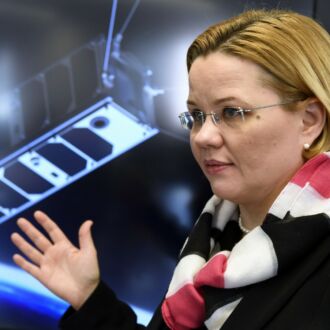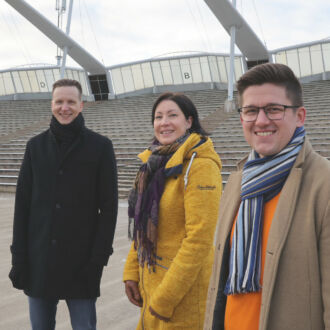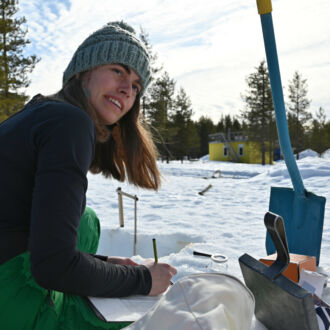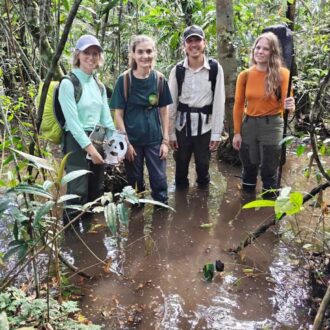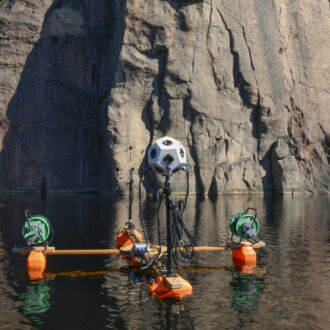NASA’s Artemis programme intends to land humans on the moon for the first time since 1972. NASA has recruited help from around the world for this huge project. Organisations such as the European Space Agency and private companies are involved.
Nokia of America Corporation, a subsidiary of the Finnish company Nokia, was selected in 2020 to join the NASA Tipping Point programme, which develops technologies for use in space. Nokia’s idea is to test 4G/LTE communications equipment on the lunar surface. The mission is called IM-2 (IM stands for Intuitive Machines).
Building a lunar communications system
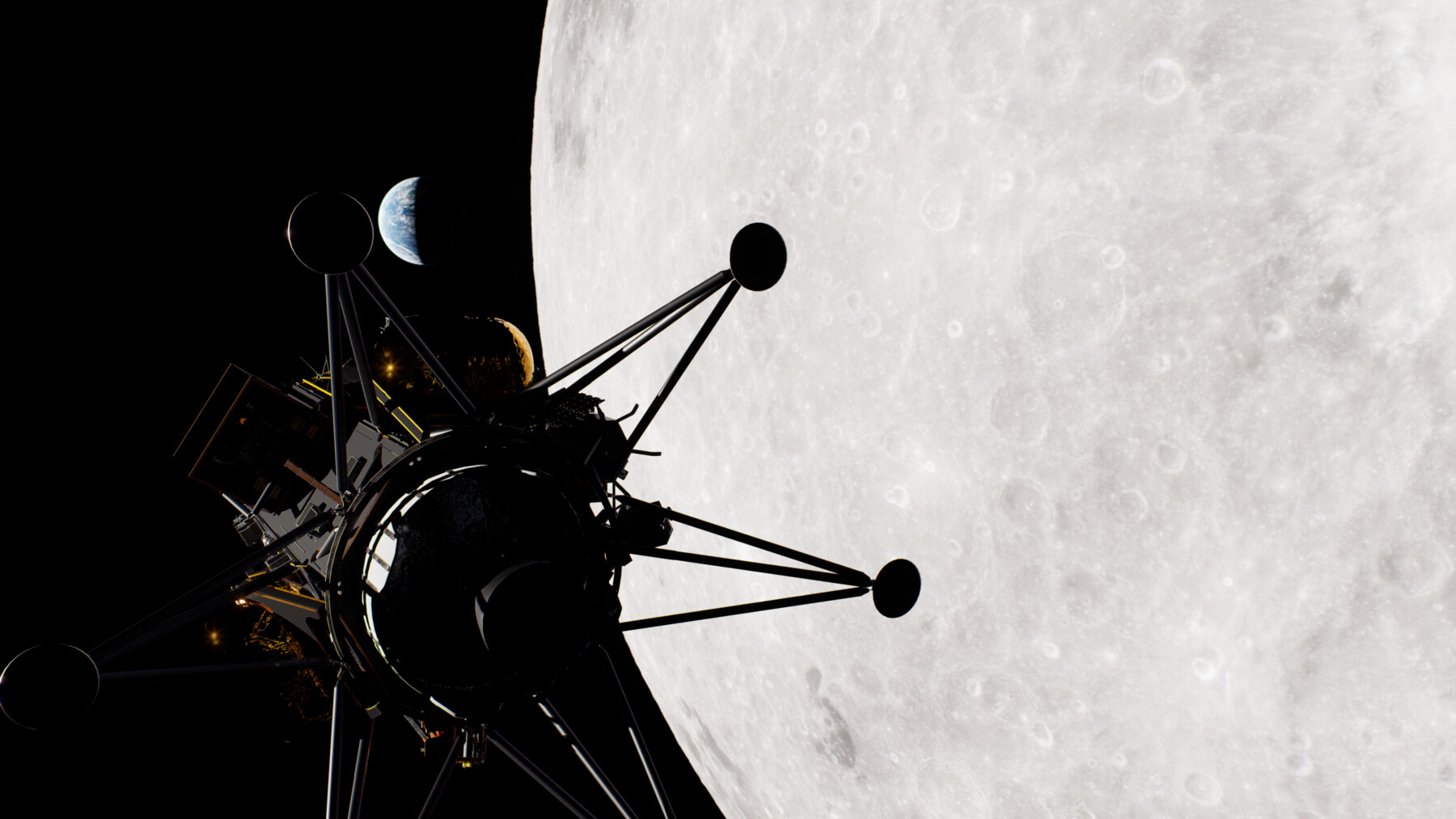
The lander’s approach to the moon will look something like this.Photo illustration: Intuitive Machines and Nokia Bell Labs
NASA wants a lunar surface communications system to support sustained human presence and large-scale activity. People and connected devices will need to send information to each other. Astronauts will communicate with voice and video, rovers will receive commands and transmit sensor data, and scientific instruments will send information they collect. Other technologies, such as the planned LunaNet, would handle earth–moon interactions, but communications on the moon could be done with a 4G system.
“While this probably will take some time before it becomes a reality, the idea is to develop lunar infrastructure with this vision in mind,” says Bernie Edwards, deputy principal technologist for communications and navigation within NASA’s Space Technology Mission Directorate.
The Apollo astronauts communicated with Very High Frequency (VHF) and S-band systems when they were on the moon, but these technologies won’t be good enough for Artemis.
“Legacy radios don’t have the necessary data rate and data throughput required to support video, image and data transfers on the lunar surface,” explains Edwards.
“Unlike any cellular network on earth”
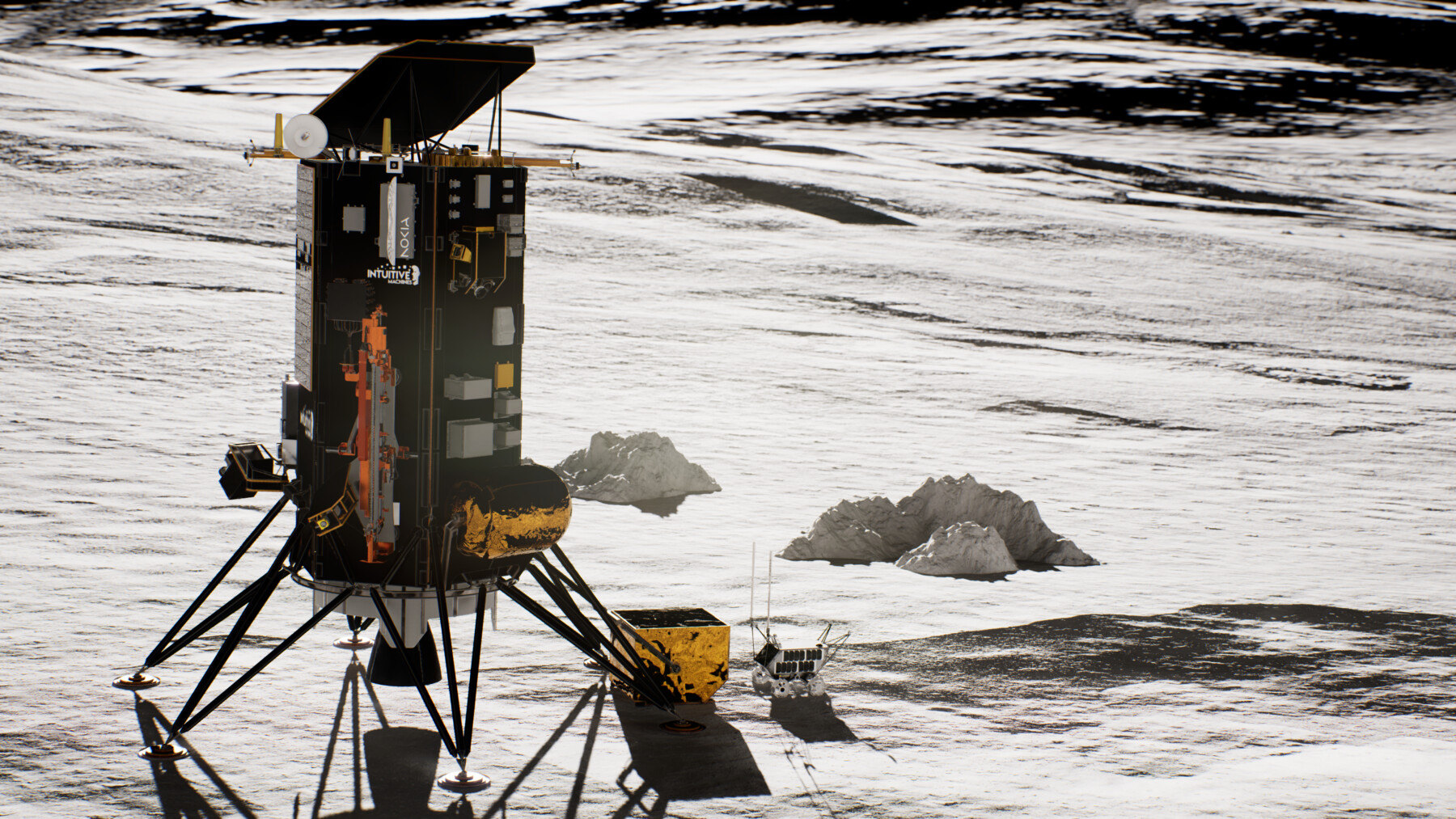
At the centre of this picture, the Lunar Outpost MAPP rover has exited the lander and raised its antennas.Photo illustration: Intuitive Machines and Nokia Bell Labs
The first step is scheduled for late 2024. A SpaceX Falcon 9 rocket will launch from Florida carrying the IM-2 mission that will land close to the lunar South Pole, where NASA plans to land astronauts. The Intuitive Machines lander will have Nokia’s 4G/LTE “Network in a Box” and antenna, while rovers will have Nokia user equipment and omnidirectional antennas.
“While it is a 4G/LTE system at its heart, it is unlike any cellular network on earth,” says Thierry E. Klein, president of Bell Labs Solutions Research, Nokia. “We have optimised the network system’s size, weight and power consumption for operations in space while carefully engineering its network elements to withstand the harsh conditions on the moon’s surface and the extreme dynamic stresses of spaceflight.”
You might be thinking, who is going to be there to install the network? “This network will deploy, configure and operate itself autonomously, and it will be remotely monitored and controlled,” says Klein.
Edwards explains that they chose 4G instead of 5G because lunar infrastructure should closely parallel developments on earth.
“Today, 5G is still being deployed, and network providers are still gaining knowledge and experience with the best way to do that,” he says. “We have a lot of experience on earth with 4G, and the upgrade path from 4G to 5G is fairly straightforward.”
Lunar rovers will use 4G
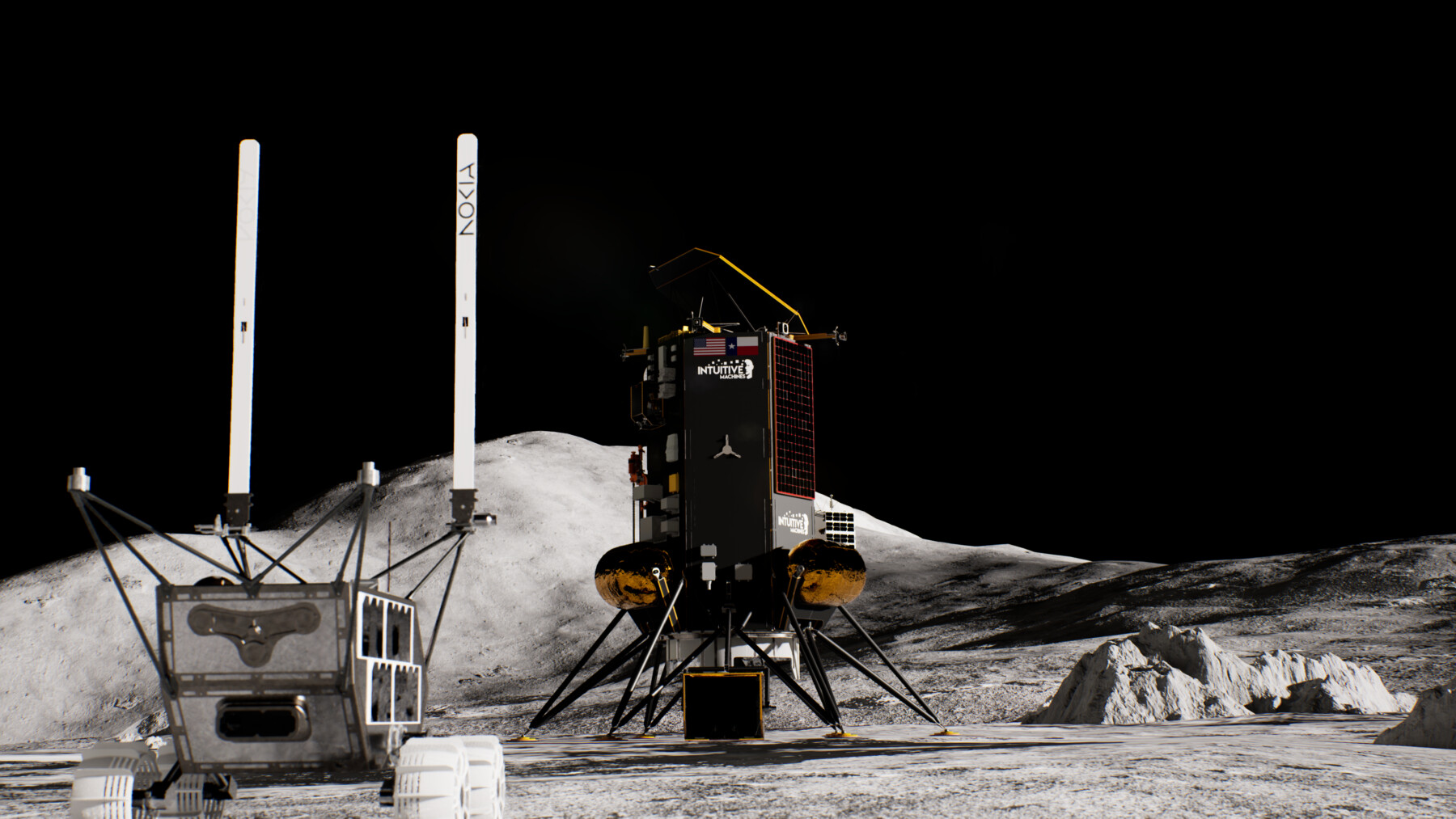
The Lunar Outpost MAPP rover (left) moves out from the lander to explore.Photo illustration: Intuitive Machines and Nokia Bell Labs
Once they make it safely to the moon, the two rovers will get to work. The Lunar Outpost MAPP (Mobile Autonomous Prospecting Platform) rover will move autonomously to map the surface and to collect and examine samples.
The Intuitive Machines Micro-Nova Hopper will use rockets to hop into hard-to-reach areas such as craters to search for water ice. The plan is for the rovers to transmit their data back to the lander using Nokia’s technology. It is just like how the Internet of Things works here on earth, but this is an important test and demonstration that it could work in space, too.
“The Nokia 4G Tipping Point Demonstration will demonstrate the suitability of using 4G communications standards and technologies on the lunar surface,” says Edwards. “The demonstration will validate predictions on performance made with radio frequency models.”
It’s all part of a learning process. “We will learn how well the system operates in the unique multipath environment of the moon,” Edwards says. “We will gain experience setting up and controlling a lunar 4G network remotely from earth.”
Nokia’s role in the future lunar economy
This video shows what it will look like when a rover is deployed on the surface of the moon.Video: Nokia Bell Labs
The IM-2 mission is only one part of Nokia’s lunar ambitions. Together with NASA, it conducted a study for a 3GPP-based (Third Generation Partnership Project) lunar surface network for future Artemis missions, and Nokia has been working with the U.S. Defence Advanced Research Projects Agency to design an integrated multiservice architecture to support a future lunar economy.
“Humanity has always been fascinated by space, and that interest has only intensified in the 21st Century,” says Klein. “We are sending more humans and more machines into space to explore, study and even pursue new business ventures.
“Wherever these humans and machines go in the solar system, they will need communications. Nokia is prepared to make that journey with them.”
NASA’s schedule for returning to the moon
|
Did you know? Finland is no stranger to space explorationFinland has a rich history of space science and exploration that continues to this day. Geomagnetism, the ionosphere and space weather studies have historically been Finnish strengths. Finland has also embraced collaboration, providing a plasma analyser for the Soviet Union’s Phobos 1 Mars probe in the 1980s and joining groups such as the European Space Agency in 1987. Bell Labs, which became part of Nokia with Nokia’s acquisition of Alcatel-Lucent in 2016, also has extraterrestrial experience. Bell Labs worked with NASA to launch Telstar 1, the first communications satellite to transmit TV signals, in 1962, and assisted with the Mercury, Gemini and Apollo programmes. Bell Labs researchers Arno Penzias and Robert Wilson discovered the background radiation left over from the Big Bang in 1964, garnering the 1978 Nobel Prize in Physics. |
By David J. Cord, June 2024
